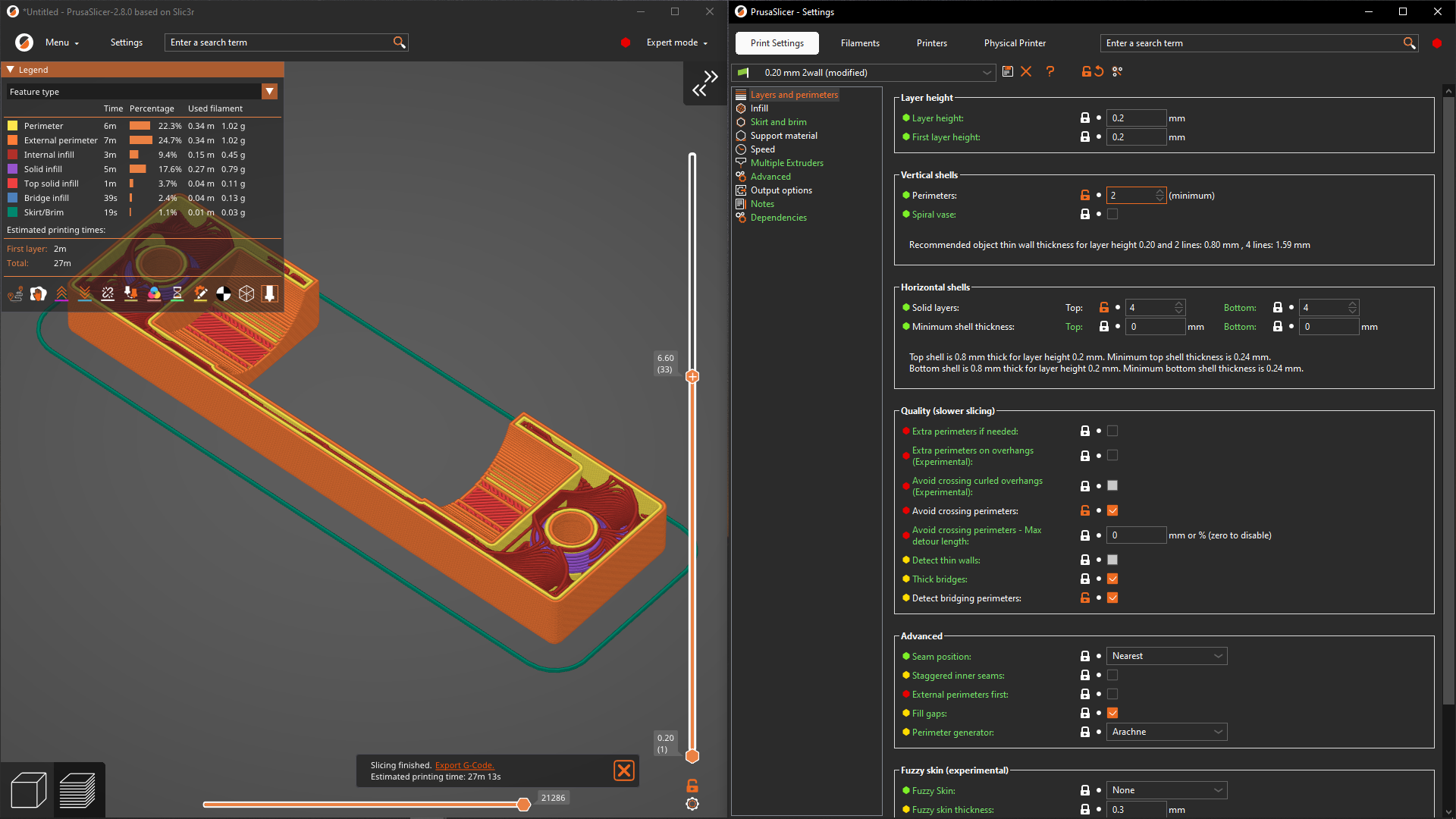

It exports as F3D (probably readable by future versions of Fusion) and STEP (standard but with less fidelity) by default.
See also https://lemmy.world/u/p1mrx


It exports as F3D (probably readable by future versions of Fusion) and STEP (standard but with less fidelity) by default.


https://github.com/aconz2/Fusion360Exporter lets you bulk export all of your projects to local storage.
There is some good stuff in this release. Go to Preferences > GUI and check “Show sidebar collapse/expand button” + “Settings in non-modal window”. Now you can put the Preview and Print Settings windows side-by-side, and see the result of every change immediately. This also requires “Background processing”, but that’s been available for ages.



all the features you know and love from things up the tree
Did OrcaSlicer ever bring back the option to slice automatically when changing settings? It’s called “Background processing” in PrusaSlicer.


deleted by creator


PLA, but I’ve only used it for sanding small models so heat wasn’t an issue. PETG should be more heat resistant.


Yeah, but those sanding pads cost more than generic sandpaper.


Does mechanical error actually matter when using sandpaper? It seems like most of the error comes from holding the tool with your hands.


You could still fill a watertight gyroid lattice with resin, if both volumes are accessible.
Though the defects are probably useful for releasing air bubbles.


The floorists forgot to enable Linear Advance.
Pepperidge YouTube remembers: https://www.youtube.com/watch?v=ayOLECuygTQ


One day filament will come with DRM so you can’t print it backwards. Only a pirate would do that!
I was monitoring this print remotely (Bambu P1S), so I’m not sure what actually happened. It’s possible that it failed for other reasons, and then the tool head got tangled in spaghetti and disassembled itself.
That’s an unreasonably generic question. Buying almost anything in the modern world requires sifting through garbage to find the good stuff.
magic ⇏ ¬ugly

Slightly, but it’s still an individual cable. A large cable tie makes more sense when it’s attached to a large tool that can’t be tossed in a pile.
The thumbnail shows a hexagonal tiling, which is like a brick-laying pattern but rotated 90 degrees, so the “half bricks” are on the top and bottom, not the sides.
Maybe it would still work to orient the hexagons so the zig-zag part is on the walls, and then fill in the gaps with half-height half-width walls. Although “half” isn’t exactly correct; the hexagons give you ugly trig numbers.
deleted by creator
STEP is at least marginally better than STL, because it can represent stuff like circles, instead of just a mesh.